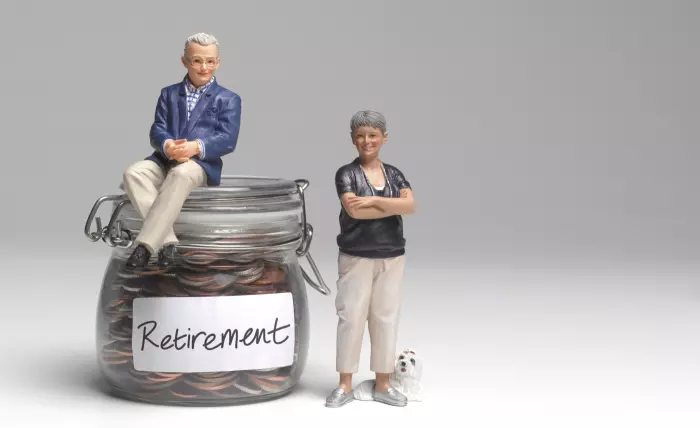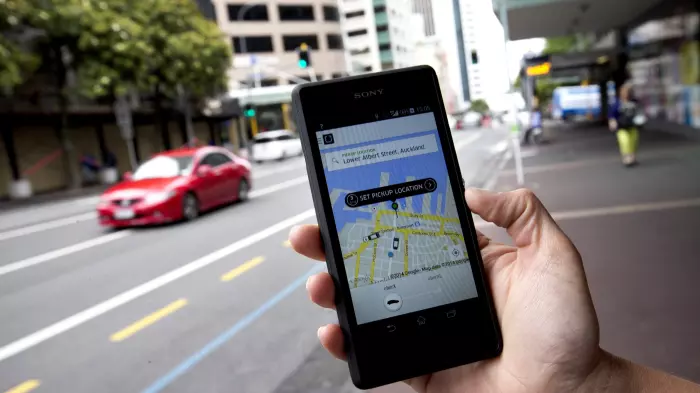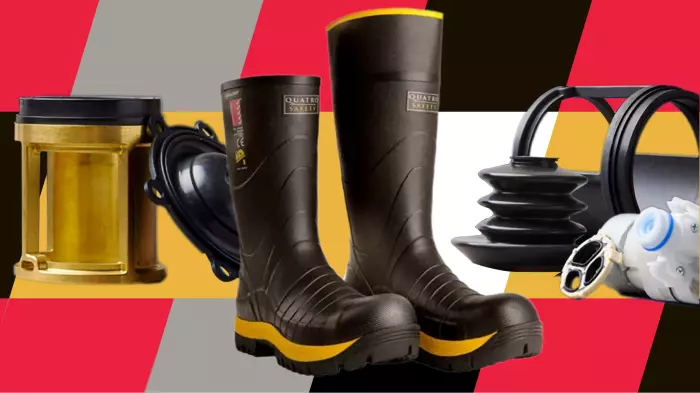BusinessDesk investments editor Frances Cook responds to emails from readers each week, answering questions about money. Below, you will find her expert advice. Send your questions to [email protected].
Mōrena Frances,
My question: are we putting all our eggs in one basket by using KiwiSaver as our only savings? Do we need to diversify?
Like many Kiwis, saving is not our strong suit, so KiwiSaver has worked well for my husband and I. To buy a house, we put in at 8% for about 10 years and lived off whatever was left, then got lucky and were living in an area cheap enough to actually buy a house.
Now, I am thinking about retirement. We're in our mid-late thirties with decent jobs. We're looking to buy/build a house next year, and we want to travel more.
But I don’t want to compromise our retirement by being a spend-thrift now. So, if we set and forget our KiwiSaver at a rate that will get us to the amount we want (based on sorted.co.nz calculations), is that enough?
We would also aim to pay off the family home, but I’m only counting KiwiSaver for retirement purposes.
Thanks for your helpful posts. They explain complex things in an easy way for those of us who are not very money-savvy.
Thanks,
E
Hi Frances,
I really enjoy your podcasts. Thank you.
I’m following the Barefoot Investor and looking into how/where to best put my increased super payments (15% of income).
Scott talks a lot about low-tax or tax-free incentives that the Australian government provides. Are there any low-tax or other incentives in New Zealand you are aware of that I could take advantage of?
I’m already in KiwiSaver and get the full $521.43, and my employer does not contribute more than the minimum 3%. I’m reluctant to add the extra payments to KiwiSaver unless there is more of an incentive than other options to do so.
I hope this makes sense, I’m still learning.
Thanks,
K
Hi E and K,
I’m combining your letters because while they’re pretty different questions, the answers are actually surprisingly similar.
I love KiwiSaver. It is fantastic. Until you hit the 3% contribution rate, and then it stops being as useful to you.
Which is, frankly, a bummer.
The benefits
Let’s start with what it gets right. By putting money into KiwiSaver, you double it straight away.
The employer contribution matches up to 3% of your salary. Some will match you further, although legally, they don’t have to. Check with payroll on what they're willing to give you.
Then, you have the government contribution of $521.43 per year as long as you put in at least $1,042.86. It's oddly specific, but okay.
You want to maximise that and get the full amount you can from your boss and the government. You wouldn’t say no to a pay rise or a tax refund, so why would you say no to those?
It doubles your money from the beginning, which is not something you’ll find by investing elsewhere. You then also get investment returns on top of that. It’s a sweet deal.
However, once you’ve got the maximum out of your employer and the government, KiwiSaver’s benefits come to a sudden, screeching stop.
The drawbacks
KiwiSaver money is locked away for retirement. This is a good thing – as human beings, we’re often masters of justifying reasons why we ‘need’ to break into our savings today, no matter how much it hurts us tomorrow.
We’re just not great at this delayed gratification business.
So, you can only get into KiwiSaver for your first home or retirement. Yes, technically, you can also access it if you’re in financial hardship or get something upsetting like a terminal diagnosis, but those are rare cases.
What if you want to retire early? Or start a business? Or help your own children into their homes?
Well, KiwiSaver won’t help you with that.
Aussie envy
Looking at the Australian system, I can’t help but be envious.
They get incredible tax breaks. The money individuals put into it is only taxed at 15%, well below most income tax thresholds.
The money those investments make is also taxed at a far lower rate. When they withdraw the money to actually retire, it’s tax-free.
Their employers will also put in 11% of their salary, which you don’t have to be a maths whizz to know is a lot more than 3%.
So, it’s no surprise that Scott Pape, the Australia-based Barefoot Investor, recommends fully using it. I would, too.
Aussies might still want to invest for themselves outside of the super system, but you would do so knowing that you’re paying a tax penalty in return for more flexibility on what you want to do with your money. Super is also only able to be accessed for a first home or retirement.
We just don't have as many benefits here, unfortunately.
Nudge nudge, politicians, feel free to boost KiwiSaver some more.
Tax hacks
That doesn't mean there's nothing to help you out on the tax front back here in New Zealand.
You could look into PIE funds. It usually means a lower tax rate on your investments than other types of investments.
These funds let you pay tax on the investment income at what's called your "prescribed investor rate" (PIR). Your taxable income sets that, and it can be anywhere from 10.5% to a maximum of 28% for a PIE fund.
Holding shares directly can often mean a tax rate of 33% or 39%.
There are plenty of online DIY platforms that let you invest in PIE funds. Kernel is one of them.
Several KiwiSaver providers also offer funds outside of the KiwiSaver system, which are PIE funds.
If you're happy with your KiwiSaver provider, have a chat with them about whether they offer something like this. Or you could talk to a financial adviser.
Spending now versus later
E, a couple of thoughts on your specific situation.
I love that you’re looking to build while also planning to travel.
You sound like you’ve been following along for a while now, so what I have to say might not surprise you. I’m a big believer in making sure you’re planning for the future while still having fun now.
You’ve done really well to get here. You’re in your mid-30s, planning to build a house and have a good career. You’re doing brilliantly.
Take the time to travel while you can, and please don’t feel guilty about it at all. Life is for living.
The numbers I'm about to use won’t work for everyone, but they’re a starting point that you can then adapt to whatever works for you.
The 50-30-20 rule says to put 50% towards needs (house, electricity, food, transport), 30% towards fun (travel, seeing friends, hobbies) and 20% towards the future (investments, savings, extra on the mortgage).
These are expensive times, so that split won’t work for everyone. But which split works for you? What would you be happy to do?
Think about that. Decide on a percentage. Then commit to it, happily, knowing you’re taking care of both now-you and future-you. Both of them are important. Don’t waste energy on guilt.
You say that saving isn't your strong suit. I actually think that's the most common situation. Humans are just wired not to be very good at this.
To create a minimal-thought system, see if you can set up an automatic payment into investments for the day after you get paid.
Once the money is in the investing account, you're much less likely to pull it out again. But don't rely on willpower to put it in there in the first place.
Or, of course, you can stay with KiwiSaver. Because if you're really worried about whether you'll stick with another investment, it's certainly better to be realistic and do what works for your money mindset.
The important thing is that you decide that you're giving up some flexibility on your money goals in return for more certainty on your retirement plans.
As a side note, if you’re looking to build/buy in about a year, your KiwiSaver is likely best in a conservative account to preserve your deposit from any short-term bounces in the share market. Have a chat with your provider and see what they recommend.
Bottom line
Where I land on this is that it makes sense for most New Zealanders to put 3% of their salary (or whatever number their employer will match) into KiwiSaver and then invest into a fund outside of KiwiSaver for themselves.
You then have the maximum benefits you can get. There is no need to lock up more money when it could be earning the same amount for you elsewhere while still being accessible if you want to use it for other life plans.
If you’re nervous about investing on your own and happy with how your KiwiSaver is performing, many KiwiSaver providers offer a mirror fund.
This is the exact same fund structure and investments but outside of the KiwiSaver system. So it will work the same way, but you can take it out if you want to.
And if you're looking for tax benefits, find one that's a PIE fund.
Send questions to [email protected] if you want to be featured in the column. Emails should be about 200 words, and we won't publish your name. Unfortunately, Frances is not able to respond to every email received or offer individual financial advice.
Information in this column is general in nature and should not be taken as individual financial advice. Frances Cook and BusinessDesk are not responsible for any loss a reader may suffer.














